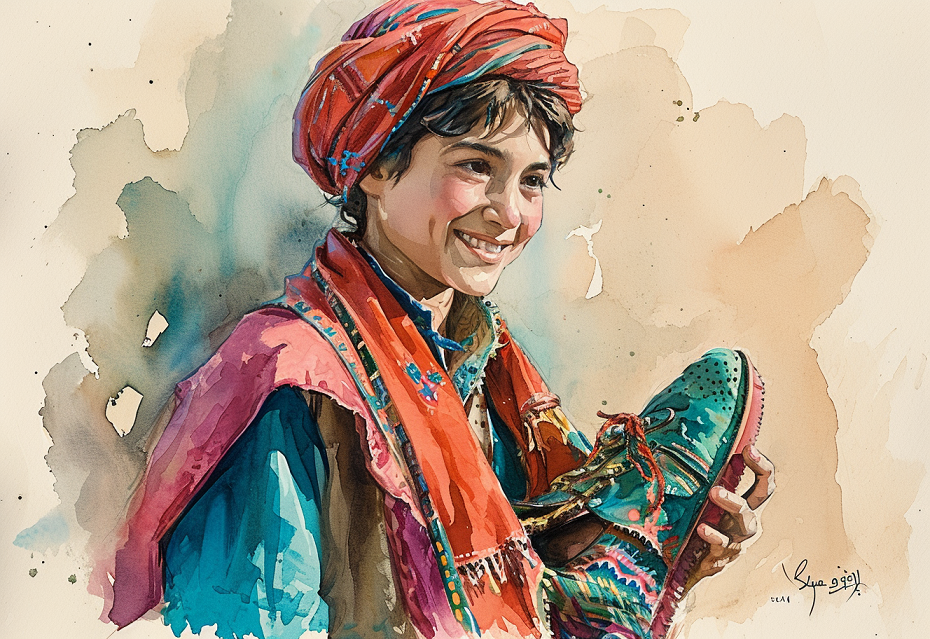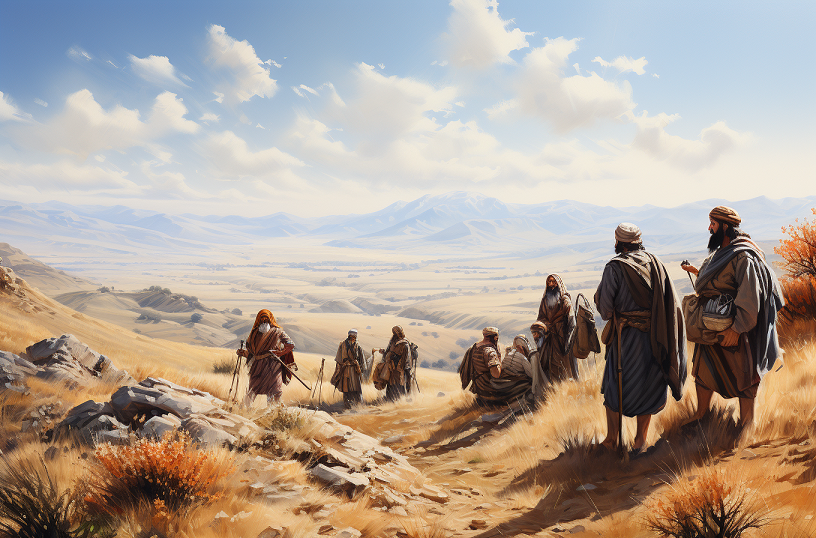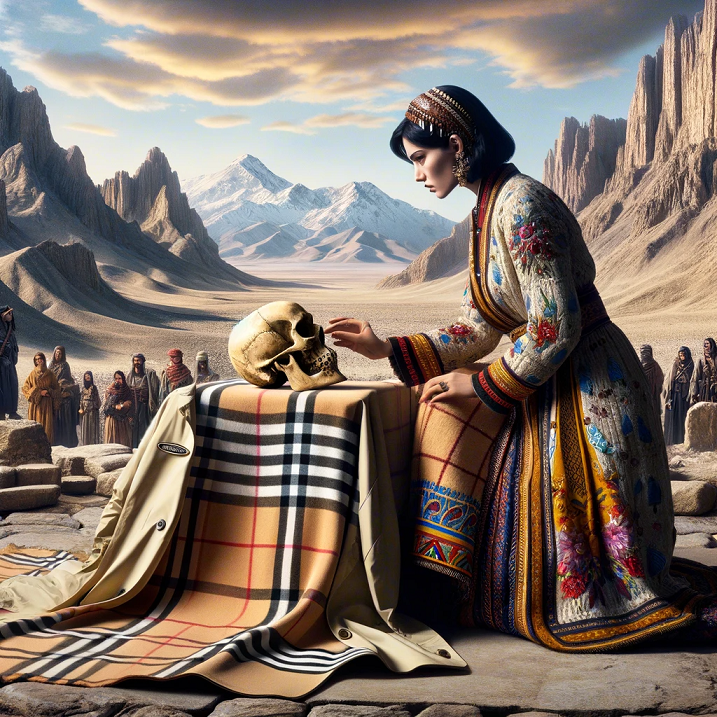Freya Stark, a renowned British explorer and travel writer, embarked on a remarkable journey through rural Iran, chronicling her adventures in the remote and enigmatic region known as “The Valley of the Assassins.” Stark’s vivid storytelling brings to life her encounters, challenges, and the unique character of the people inhabiting this isolated corner of the world.
Key Takeaways:
- Isolation and Complexity: Life in rural Western Iran is marked by isolation and layered complexity.
- Struggles of the Marginalized: The presence of impoverished individuals highlights the harsh realities faced by the marginalized in this nomadic society.
- Archaeological Exploration: Freya Stark’s quest for ancient graves and artifacts reflects her passion for archaeological exploration.
- Diplomacy Amid Tensions: Navigating encounters with the authorities requires tact and diplomacy in this isolated region.
This captivating narrative opens with Stark’s arrival in the solitary landscape, setting the stage for a journey filled with unexpected friendships, footwear challenges, grave-digging expeditions, and encounters with both the impoverished and the authorities. Stark’s ability to forge connections with the local tribes and her keen observations are hallmarks of her books, providing us with a glimpse into the complexities and human connections that thrive in the most remote corners of our planet.
Rural Solitude of the Western Zagros Mountains
Arguably one of Stark’s strongest points is her vivid and evocative descrtipions of landscapes and people. One such figure is a Malikshahi, belonging to a Kuridsh tribe that dwells in the Ilam province of Iran, whose jaunty and pleasing appearance captures the essence of the region’s rugged charm. Stark’s intricate detailing of his attire, from the quilted jacket woven in a Cashmere pattern to the two knives in his sash, provides a glimpse into the local fashion and the practical tools necessary for survival in this challenging terrain.
The Malikshahi’s turban, perched on one side of his bald forehead, adds a touch of individuality to his appearance, hinting at the cultural diversity that thrives in the region. His facial features, characterised by a clean-shaven visage, bright and closely-set eyes, and an enormous nose, reflect a blend of local traits that make him stand out in Stark’s narrative.
What strikes the reader most about the Malikshahi is his demeanour. Stark describes him as someone with a ready smile on his lips, mirroring the warmth and hospitality that would come to define her interactions with the locals during her journey. His confident gait and the manner in which he carries his belongings, wrapped in a small handkerchief at the end of a stick, reveal a self-sufficient and resourceful character.
Building Friendships Across Cultures
Freya Stark’s journey into “The Valley of the Assassins” takes a fascinating turn as she begins to build meaningful connections with the local tribes inhabiting this solitary region. The narrative reveals that despite a perception of Malikshahis on the west of Kebir Kuh (Big mountain) as lawless individuals of an inferior kind, the wandering tribesman she encounters challenges these preconceptions through his friendly rapport with the Larti tribe and Stark’s travel companions.
In this remote and isolated landscape, everyone is known to one another, and the bonds formed between individuals carry great significance. Stark highlights the absurdity of expecting inconspicuous secrecy in such a lonely region, underscoring the tight-knit nature of the communities dwelling here.
The ability to navigate this solitary terrain successfully, as Stark herself does, requires more than just physical prowess. It hinges on personal relationships, trust, and a deep understanding of the local culture.
Stark’s writing sheds light on the nuanced dynamics at play in this isolated world, where the lines between friend and stranger blur, and where a smile and a kind word can bridge cultural gaps and forge bonds that transcend language barriers. Stark’s encounters with the local inhabitants of “The Valley of the Assassins” offer a glimpse into the richness of human interaction in the most unlikely of places, setting the stage for further exploration into her captivating journey.
Footwear Challenges and Givas
As Freya Stark’s journey continues through the rugged terrain of “The Valley of the Assassins,” she encounters challenges that extend beyond the landscape itself. One such challenge revolves around the footwear she relies upon for her travels.
Stark paints a vivid picture of her struggles with inadequate footwear, a circumstance that anyone familiar with the harsh conditions of remote regions can appreciate. Initially, she had acquired an elegant pair of shoes in the Baghdad bazaar, seemingly suitable for her adventures. However, the unforgiving hills and rocky terrain quickly took their toll, causing her footwear to deteriorate rapidly.
In this isolated region, where comfort and practicality are paramount, Stark’s predicament is both relatable and poignant. She finds herself with toes exposed to the elements, having worn out her stockings at a rate of one pair per day. The harsh environment and unpredictable terrain have rendered her once-elegant shoes unsuitable for the arduous journey.
It is at this juncture that Stark introduces the Larti tribe, inhabitants of the region. Although not known for crafting givas (footwear) like the Hindimini, they possess a unique set of skills. Stark’s narrative introduces a small boy from a neighbouring hut who happens to be in the process of making a pair of givas for himself.
These locally made givas are designed for the rugged environment. They feature robust uppers crafted with a strong needle weaving of cord-like wool, while their soles consist of strips of tough leather. These soles are engineered to be flexible, much like the top of a roll-top desk, with protrusions of about half an inch all around.
Unlike the city things, these were stout footwear, their uppers made with strong needle weaving of cord-like wool, and the soles of strips of leather hard as wood, arranged to be flexible on the same principle as the top of a roll-top desk, and sticking out about half an inch all round in proper mountaineering fashion.
Freya Stark: The Valley Of The Assassins
Despite their ruggedness and durability, the givas are a size too big for Stark. However, Shah Riza, her companion on this journey, enthusiastically offers to help. He humorously questions whether it is not his profession to fit clothes on anyone, emphasising his adaptability and resourcefulness.
Shah Riza’s resourcefulness comes to the fore as he takes out an enormous packing needle from his tobacco box, a versatile tool that has already served Stark in repairing her torn skirt. With his Pahlevi hat tilted rakishly over one eye, Shah Riza diligently sets about adjusting the givas. His focused efforts and his willingness to assist Stark underscore the camaraderie and support that characterise their partnership on this extraordinary expedition.

Grave Digging In Beni Parwar Lands
In the remote and enigmatic “Valley of the Assassins,” Freya Stark’s journey takes an intriguing turn as she and her companions embark on a grave digging expedition; an oft-repeated activity throughout her travelogue. The text provides insights into the motivations, preparations, and discoveries associated with this unusual endeavour.
The expedition begins with a sense of curiosity and adventure, as Stark and her fellow travellers contemplate the idea of exploring the graves in the lands of the Beni Parwar. Preparations for the grave digging venture are somewhat unorthodox, as Stark and her companions rely on basic tools and local resources. Notably, an old man from the region becomes an integral part of the expedition. His role in the endeavour signifies the importance of local knowledge and expertise when navigating such remote and unfamiliar terrain.
As the group embarks on their exploration of the graves, they are met with intriguing findings. Her text alludes to the discovery of narrow shafts constructed with flat stones, providing a glimpse into the burial customs of the region. The skeletons within these graves are positioned with their heads facing west, suggesting adherence to specific burial rituals.
Two sharp stones, distinct from flint but pointed like flints, are discovered beneath the head and at the knees of the skeletons. These findings raise questions about their significance and purpose in the burial practices of the Beni Parwar. Additionally, the absence of other items within the graves adds an element of mystery to the expedition.
One notable artefact retrieved from the graves is a skull, which Stark takes into her possession, wrapping it in her Burberry trench coat. This decision raises eyebrows among her companions, particularly the’ Philosopher,’ who expresses concern about the unconventional cargo. The inclusion of the skull in Stark’s collection hints at her role as an explorer and collector, driven by a desire to document and understand the culture and history of the region.
The bones were intact, and I took the skull, and wrapped it up in my Burberry, to the chagrin of the Philosopher, w h o felt I was robbing him of his garment. And as the dusk was falling, we stumbled back among the obliterated terraced gardens of the city, to the hut by the mill.
Freya Stark: The Valley Of The Assassins
As the dusk falls and the expedition concludes, the group retraces its steps among the terraced gardens of the ancient city, returning to their hut by the mill. The narrative of the grave digging expedition offers a glimpse into the sense of exploration and curiosity that drives Stark’s journey in “The Valley of the Assassins.” It also foreshadows the challenges and discoveries that await her in this remote and mysterious landscape.
Poverty & Hospitality
As Freya Stark’s journey continues, we find ourselves immersed in a pivotal moment in her narrative—a night spent in a humble hut by the mill. This part of the text provides a sobering glimpse into the challenging living conditions Stark encounters in this remote region, as well as the resilience and hospitality of the local inhabitants.
The description of the hut leaves no doubt about its modesty and simplicity. Stark paints a picture of a dwelling that lacks the comforts and amenities of urban life. Her willingness to embrace such basic accommodations underscores her commitment to exploration and her curiosity about the lives of the people who call this desolate region home.
One of the key elements highlighted is the poverty of the hut’s host. The barley crop in the area has failed that year, leaving the host with limited resources. Despite their own meagre circumstances, the host and his family exhibit a profound sense of hospitality and generosity.
Stark’s offer of two krans, a small sum, is accepted by the host with grace and humility. His words, “What I have, I give you. What is not here, you cannot have,” reflect a deep sense of courtesy and a commitment to sharing what little they possess. It is a poignant reminder of the kindness that can be found even in the harshest of circumstances.
However, a poignant moment occurs when the host’s wife inadvertently drops the fourpence Stark offered into a fold of her garment, where it is lost. Stark discovers her sobbing while baking their bread, revealing the emotional weight of their financial hardship. This scene underscores the harsh realities faced by the people of the region and the emotional toll it takes on them.
Encounters with the Impoverished
In the remote and unforgiving landscape of the Western Zagros mountain range, Freya Stark’s journey continues to unveil the complexities of human existence in this isolated region.
Stark introduces us to a widow and her daughter from Lakistan, a land across the river. These women represent the marginalised and vulnerable in this nomadic society. The widow and her daughter are described with less favourable characteristics: narrow, foxy faces, and shifty eyes. They exude an air of desperation and opportunism, likely driven by the harsh realities they face in a region where survival is a daily struggle.
These women’s circumstances, as explained by Stark, are a result of some war or raid that forced them from their homes. Their presence in the region is marked by a constant search for sustenance, be it through labouring in the fields for a share of the household’s meagre bread or, in some cases, resorting to less honourable means, such as theft.
In a land where protection and charity are extended primarily through bonds of kinship and hospitality, those without such connections are left to fend for themselves in a harsh and unforgiving environment.
A Tense Encounter with the Police
As events unfold, Freya Stark’s journey takes a tense turn when she and her companions encounter the local authorities. The arrival of three mounted policemen on the horizon signals a shift in the atmosphere. Stark and her fellow travellers are taken by surprise, as their peaceful exploration is suddenly interrupted by the presence of the authorities. The description of the lieutenant of police, a young man in a tidy khaki uniform with a rather heavy chin, adds to the tension of the moment.
The lieutenant and his two followers descend into the hollow where Stark and her companions are situated. Their presence is met with a mix of curiosity and apprehension. The master of the tents, who appears to be the officer among the authorities, is greeted with deference by the explorers.
The policemen descended into the hollow, and the master of the tents hastened out to salute one who appeared to be the officer, a youngish man in a tidy khaki uniform… His two followers belonged to the nazmieh, in blue, with guns, pistols, and cartridge-belts hanging all about them. They bent from their saddles to make enquiries. The master of the tents pointed to where I sat secluded. Shah Riza glanced at me uneasily. Quite imperceptibly our friendly circle of tribesmen had melted away: Caesar’s enemy has no friends in Persia when Caesar is anywhere about.
Freya Stark: The Valley Of The Assassins
At this juncture, Stark’s quick thinking and composure come to the fore. She greets the lieutenant with ceremonial politeness, subtly implying that the tent they are in is hers, albeit with a provision for his presence. This clever manoeuvre maintains a sense of control and politeness, while also asserting her rights to the tent.
The lieutenant’s initial purpose for approaching Stark and her group remains shrouded in uncertainty. However, it becomes clear that they are being questioned about their presence in the region. The lieutenant’s scepticism is evident, as he expresses doubt that they would possess passports given the remote location.

Stark’s presentation of her passport, and later Shah Riza’s document, takes the lieutenant by surprise and prompts him to scrutinise the documents closely. The legitimacy of these documents, signed at the frontier by Persian officials, adds credibility to the explorers’ presence in the area.
Ultimately, the lieutenant, albeit with some reluctance, accepts the validity of their documents and offers a sense of reassurance about the safety of travel in Persia. This exchange with the authorities underscores the bureaucratic challenges and the importance of official documentation when navigating remote regions, even for seasoned explorers like Freya Stark.
Freya Stark takes us on a remarkable journey through a remote and enigmatic landscape, where every encounter unveils a layer of complexity in the lives of its inhabitants. From humble huts and impoverished strangers to ancient graves and encounters with the authorities, Stark’s exploration is marked by a blend of resilience, curiosity, and diplomacy. As we navigate this intriguing narrative, we gain a deeper understanding of the intricate tapestry of human relationships and the challenges faced by those who call this unforgiving terrain home. Stark’s unwavering determination to uncover the region’s mysteries and her ability to navigate tense encounters highlight the enduring spirit of exploration that transcends the boundaries of time and place.
FAQs
Q: What is “The Valley of the Assassins” about?
A: It’s an exploration narrative by Freya Stark about her journey through a remote and mysterious region.
Q: Who are the impoverished individuals encountered in the essay?
A: They are a widow and her daughter from Lakistan, struggling to survive in the harsh landscape.
Q: What archaeological discoveries are made in the region?
A: Ancient graves, burial customs, and artifacts shedding light on the area’s history are uncovered.
Q: How does Freya Stark handle the encounter with local authorities?
A: She presents valid passports and maintains composure to navigate the situation diplomatically.

